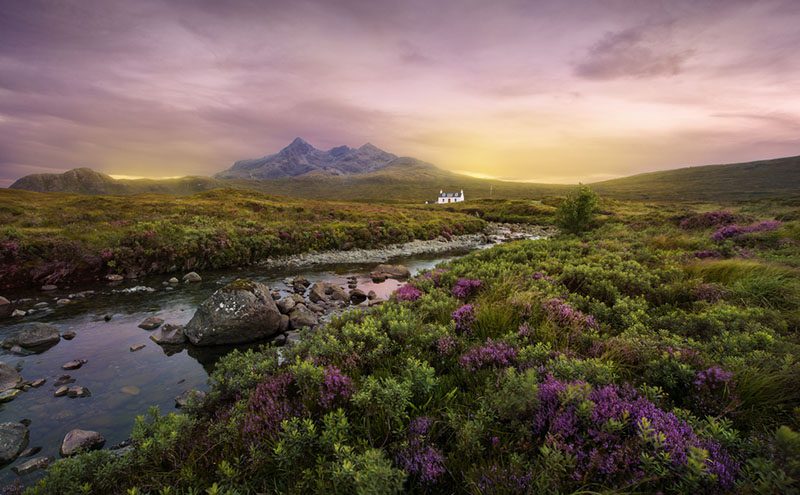
An ambitious new initiative aims to pioneer new ways of funding nature conservation in Scotland through the launch of the £1 Billion Challenge.
Led by the Scottish Wildlife Trust and the Scottish Environment Protection Agency (SEPA), the Scottish Conservation Finance Project aims to generate new forms of investment in Scotland’s stocks of natural capital (1) in ways that will deliver significant environmental, social and economic benefits, as well as returns for investors.
The project brings together a dynamic mix of organisations from the private, public and non-profit sectors to develop cutting-edge investment and funding models for large-scale nature conservation activities, for example planting native woodlands, restoring oyster reefs and creating urban green spaces.
The London launch of the £1 Billion Challenge will take place at the Natural Capital Investment Conference at the Royal Society on Thursday 28 February.
This event follows a successful Edinburgh launch earlier this month which included speakers such as Gary Gillespie, Chief Economist at the Scottish Government; Francesca Osowska, Chief Executive of Scottish Natural Heritage and Richard Mattison, Chief Executive of Trucost, a part of S&P Global.
Jonny Hughes, Chief Executive of the Scottish Wildlife Trust said: “Globally, investment in nature needs to increase substantially to meet the growing challenges posed by climate change and biodiversity loss.
“Scotland was among the first nations in the world to pledge support for the UN Sustainable Development Goals and has been at the forefront of a number of pioneering environmental initiatives, including the World Forum on Natural Capital.
“The aim of this new initiative is to provide a practical opportunity to come together, exchange ideas and collectively achieve a lasting impact. Ultimately we want to begin to drive billions of pounds of investment into Scottish conservation in the coming years.”
According to a 2016 report by Credit Suisse AG and the McKinsey Center for Business and Environment an estimated USD$300 – $400 billion per year is needed globally to preserve healthy ecosystems on land and in the oceans. Currently only around $52 billion is available per year, mostly in the form of public and philanthropic funds. (1)
Terry A’Hearn, Chief Executive of the Scottish Environment Protection Agency, said: “In Scotland, we currently using the resources of three planets, but only have one. Good leaders say – there’s only one planet, we have to work within it. But great leaders say – how do we turn this from a threat into an opportunity for our organisation? The Scottish Conservation Finance Project is an exciting opportunity to bring the right people together to meet this challenge.”
John Rowan, former Group Treasurer of Virgin Money adds: “The Scottish Conservation Finance Project should offer a variety of sustainable investment opportunities. It is well understood that these can provide good diversification opportunities for investors.”
A diverse range of organisations has helped shape the early stages of the project. These include Conservation Capital, Loch Lomond & The Trossachs National Park, Confor, Scottish Natural Heritage, Edinburgh Centre for Carbon Innovation, Crown Estate Scotland, Highlands and Islands Enterprise, Scottish Water and Virgin Money, alongside project initiators SEPA and the Scottish Wildlife Trust.
Neil Birnie, Chief Executive, Conservation Capital said: “Supporting nature-based businesses as a tool for conservation finance has proven successful in other parts of the world. Scotland has fantastic natural assets, talented entrepreneurs and a government focused on strengthening our natural capital. This initiative represents an exciting new development for both nature conservation and the business community in Scotland.”
Stuart Goodall, Chief Executive, Confor said: The challenge of protecting and increasing natural capital is big, urgent and requires large-scale, new investment to be unlocked. We welcome SEPA and the Scottish Wildlife Trust taking on that challenge and we’re looking forward to working with the partnership they have assembled to make a real difference for Scotland.”
Charlotte Wright, Chief Executive, Highlands and Islands Enterprise (HIE) said: “Scotland’s natural environment, and particularly that of the Highlands and Islands, is world famous. It is instrumental in attracting people to visit, to live, to work and to study here. It underpins not only the quality of life but many of our key economic sectors such as aquaculture, food and drink, life sciences and creative industries, and of course tourism. These are so important to local economies and communities, often in the most rural parts of our country. It is therefore crucial that regional economic development is carried out sustainably and in the context of appropriate investment in nature conservation and I am delighted that HIE is part of the Scottish Conservation Finance Project and the £1 Billion Challenge.”
Notes
(1) Natural capital can be defined as the world’s stocks of natural assets which include geology, soil, air, water and all living things.






